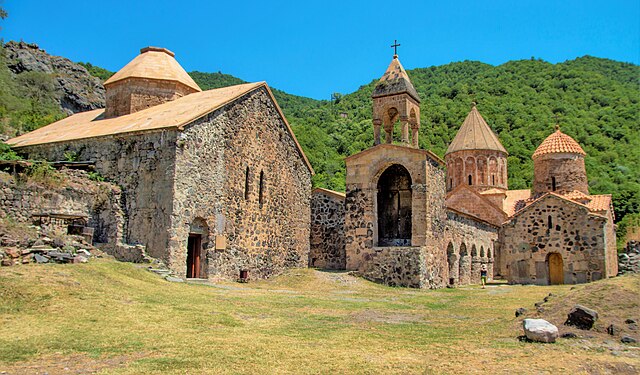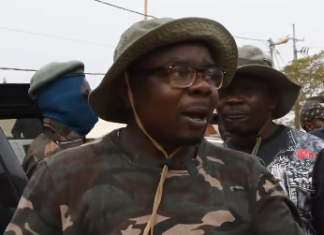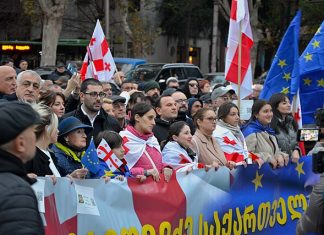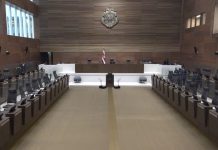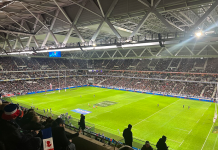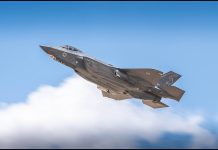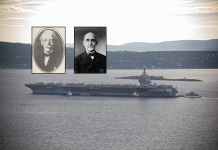The ethnic antagonism in media between the conflicting states has recently gained special importance, which is necessary to study amidst the latest events. They represent a rich study material in the form of expert description of the current geopolitical situation and media trends. This article aims to scrutinize the root causes of hostile manifestations in contemporary border conflict between post-Soviet countries of Eastern Europe and the Caucasus, and specifically, the conflict between Armenia and Azerbaijan. An attempt is made to connect the historical past to contemporary insights and challenges as a fundamental requirement for meaningful communication and conflict studies. In those processes, it is necessary to study the established, changing and emerging roles of the mass media. Mass media do have an impact that is compounded by our uncertainty about exactly what that influence is, how it can be determined and measured, and what involvement individuals have in the process. Consideration of such issues is especially important when one deals with the role of media in inter or cross-cultural communication. After all, even in the former dictatorially controlled states of Eastern Europe, state-owned media were not able to permanently eliminate racial, ethnic, religious, or cultural differences and conflicts. In some cases, the mass media actually played a role in the eventual collapse or destruction of the Communist dictatorships that controlled them.[1] There has been a distinctive transformation in Eastern Europe, and there has been increasing evidence that state control, including that of mass media in former Communist states, had not founded any constant basis that could suppress the social aggressiveness we are witnessing in our everyday life. Ethnic, racial, cultural, historical divisions thus were not overcome by a new ideology. However, it is important for us to understand what results when certain issues or concepts are removed from the agenda or added by the mass media. Even when the governments of the communist republics of Eastern Europe allegedly had absolute control over the mass media, there were people who used modern technology and beliefs, as well as religious or ethnic agitation, as a basis for transfering messages opposing to the ideals of their governments.
The ambivalence of enmity between Armenian and Azerbaijani people in historical context
Hate speech and discriminatory manifestations between Armenians and Azerbaijani people are not a new phenomenon and have an ambivalent nature in it’s core. Several sources examined in the frames of this article (including memories of elderly interviewees from their personal live experiences) attest prevalent hate speech and discrimination in Azerbaijan has been a primary driving force of atrocities against ethnic Armenians at a minimum since the 1980s, although that was expressed in relatively mild forms in comparison with the 2020 war in Nagorno Karabakh.
In Armenian media analyses and public discussions about regional relations, the context of the Soviet past often comes up, especially when recalling coexistence with Azerbaijan.
The ambivalence of enmity between Armenian and Azerbaijani nations is specifically emphasized during the Soviet period, and to this day, the question arises among researchers: what was the incentive for the peaceful coexistence and milder state of hostility between these two nations during the Soviet period?
The Soviet Union united the Republics of Armenia and Azerbaijan under the ideology of socialism and “brotherhood of peoples” within a certain framework of coexistence, which concealed the contradictory and problematic pages of the historical relations of the political entities. Both in memories inherited from the Soviet years and framed by the position of a once victorious nation, the years of the Soviet Union willingly become a point of reference as a historical period of Armenia’s dominance over Azerbaijan, a coexistence that was based on Armenian cultural superiority.
During the Soviet period, Nagorno-Karabakh was an autonomous region, an administrative unit created by the USSR authorities within the Azerbaijan SSR (Nagorno-Karabakh Autonomous Oblast). It existed from 1923 to 1991. The majority of the population were Armenians ( the number of Armenians in the Nagorno-Karabakh Autonomous Oblast was 132,800). Throughout the existence of Soviet Azerbaijan (April 28, 1920 – August 30, 1991), with the exception of the last few years, Armenians constituted the largest minority in that republic (the number of Armenians in Soviet Azerbaijan, excluding the Nagorno-Karabakh Autonomous Region, was 170,310 people). Just as Azerbaijanis constituted the largest minority in Soviet Armenia.[2]
The issue of the region’s territorial ownership is one of the causes of the Armenian-Azerbaijani conflict and a key factor in the outbreak of the Karabakh war in different years. The prevailing Armenian population of the Nagorno-Karabakh Autonomous Region proclaimed partition from Azerbaijan in 1991 as an articulation of national self-determination. This declaration succeeded massacres of ethnic Armenians and forced deportation from Azerbaijan. The peak of these events was the first Karabakh war in the early 1990s.20 Armenians have been accused of committing atrocious crimes against Azerbaijanis during this war.
The Nagorno-Karabakh conflict and wars have forgotten the experience of years of coexistence between peoples during the Soviet period.
Despite attempts at political and public reinterpretation of Armenia’s relations in and with the region (the relations between Armenia and neighboring states in the region are often compared and paralleled with the ability to communicate with neighbors in everyday life), relations with neighboring countries, specifically with Azerbaijan, are largely perceived as an unchanging fact, not subject to transformations of political and historical contexts and processes. Public discourse about the hardness of relations is expressed in terms of “it’s been around for centuries,” “it’s always been like this,” “a Turk remains a Turk,” “we wittnessed Genocide,” “they committed Genocide” and other similar formulations. Thus, we note that public perceptions of the nature of relations with the region, Armenia, and neighboring states, and their transformations, are largely conditioned by the historical context and memory policies, the fresh traces and trauma of the Second Karabakh War, the lived experience of the Soviet past among older people, daily media manipulations, and the speculations of forces with different political interests.
After the second Karabakh war in 2020, public understandings of peaceful coexistence with Azerbaijan are largely entrenched, but alongside radical-rejectionist viewpoints, there are also voices criticizing such positions, attempting to empathize with Azerbaijani society and parallel the tragic consequences of the war for both societies.
In nowadays, in parallel with having political and economic relations with neighboring states, Armenian society also distinguishes the layer of human relations. If in relations with Turkey and Azerbaijan the idea of mutual benefit prevails, and in this regard economic relations seem to be regulated and beneficial, then the regulation of relations between peoples, which is formulated as “friendship”, is generally met with more sharp rejection.
Our research shows that different public segments, including media in Armenia base their judgments about the region on an analysis of categories of interest and influence, particularly Russia’s role in the region and the extent of Armenia’s political subjectivity. Karabakh is perceived as a zone of Russian interest and influence, and Russia is attributed the role of both the instigator of the war and the “inevitable” strategic ally, with which the deterioration of the entangled relations could be devastating for Armenia. It is not difficult to notice that this is not only a public, but also a dominant political mindset and discourse in Armenia, which reveals the direct interface between the public and the political segments.
The Enemy’s Image: Inter-Ethnic Hostility Speech Propaganda during Nagorno-Karabakh War in 2020
Brief overview to the current state of the conflict: After nearly three decades of Armenian control over Nagorno-Karabakh and the so-called occupied territories, Azerbaijan regained sovereignty over two-thirds of the disputed territory in 2020 as a result of the Second Karabakh War. Following the end of the active phase of the conflict, the parties started peace negotiations (November 2020-September 2023). However, these talks failed to make progress and, in September, 2023, Azerbaijan launched a renewed military operation, as a result of which it finally regained full control over the Nagorno-Karabakh . After regaining Nagorno-Karabakh, Azerbaijan initially froze and then resumed bilateral talks with Armenia, but already in a different format. After its military success, Azerbaijan’s position was strong enough to force Armenia to negotiate, this time without intermediaries, such as Russia, the EU, and the US, which it accused of using mediation to strengthen its own political position in the region. Despite Nagorno-Karabakh’s return to Azerbaijani sovereignty , several issues still remain to be resolved between the two sides. In the ongoing negotiations, the parties are discussing the following contentious issues: (1) mutual recognition of territorial integrity; (2) demarcation and delimitation of the border; and (3) the unblocking of transport routes, including the so-called Zangezur transport corridor that connects Azerbaijan with its exclave Nakhichvan, and further to Turkey and Europe.
The main directions of Anti-Armenian propaganda and hate speech in Azerbaijan and its manifestations in the media during the Nagorno Karabakh war in 2020
One of the main directions of the modern Azerbaijani media is the actualization of the image of the “enemy Armenian” in public consciousness. To study the latter, I subjected Russian and English-language articles from 10 Azerbaijani electronic media outlets[3] to a qualitative review.
The qualitative study of Azerbaijani media-texts allows us to assume that the Azerbaijani government, by constantly referring to the enemy Armenian in the media, keeps the Azerbaijani society in an atmosphere of anxiety and tension, making it more controllable. To reinforce all this, Armenians and Azerbaijanis are taken into contrast in media texts. Armenians, unlike Azerbaijanis, appear as the bearers of all possible negative traits.
Any commonality between Armenians and Azerbaijanis is excluded, and this could lead to xenophobia and the impossibility of common coexistence in the region, which is precarious for both countries. The impression is created that the main function of the Azerbaijani media is to “unmask” the “inhuman nature” and “criminal plans” of the Armenians.
As a result, every negative action taken against an Armenian, even physical persecution, is justified.
In the Azerbaijani media, on the one hand, the “enemy Armenian” is presented as weak, powerless, who can easily be eliminated if desired, at the same time, they talk about a terrorist, an “Armenian who has committed various acts of violence against Azerbaijanis for centuries”.
A clear example of the formation of hate speech on ethnic grounds in the mass media is the thematic references of the online media of Azerbaijan about Armenia and Armenians. The latter are represented in a fairly large volume in the daily news, not only in the materials about the conflict, but also in the news related to other fields: sports, culture, economy, etc.
“Hate speech” has a clear addressee, in this case, “Armenia as a state”, “RA authorities”, “Armenians/RA citizens/Armenian Diaspora” appear as addressees in the Azerbaijani media.
In the Azerbaijani media, the image of the enemy is formed around both the state of Armenia and, more specifically, the Armenian people, Armenians, which is reinforced by the following negative characteristics: fascists, terrorists, bandits, murderers, cutthroats, barbarians, nationalists, deserters, chauvinists, aggressors, invaders, criminals, occupiers, executioners, liars, inhumans, treacherous neighbors (фашисты, террористы, бандиты, убийцы, головорезы, варвары, националисты, дезертиры, шовинисты, агрессоры, захватчики, преступники, оккупанты, палачи, лжеци, нелюди, вероломные соседи).
During the 2020 Nagorno-Karabakh war, manifestations of hatred intensified, specifically, on ethnic grounds. Since September 27, 2020, monitoring of Azerbaijani media and social networks has recorded mass hatred and calls for murder, violence, and torture, targeting also children.[4]
The basis of interethnic hatred lies in the deliberate physical pain, emotional anguish, and public humiliation inflicted by Azerbaijani forces on Armenians who were captured or executed in both war and peacetime.
This is particularly obvious in the publicly disseminated videos through social media channels (telegram, Instargram etc) of soldiers applying discriminatory rhetoric as they exert violence against Armenians, inter alia, the sexual distortion of bodies of female warriors and other manifestations of severe violence. The Center for Law and Justice “TATOYAN” foundation analyzed[5] 287 videos and photos in total evidencing the gross and severe violations of the Azerbaijani military forces. The videos were translated into English and Russian.[6]
Peculiarities of enemy image perception in Armenia and its manifestations in the media during the Karabakh war in 2020
Armenia, being actually in a war for years, being a party to an unsettled conflict, having a hostile environment and a hostile imagination of historical memory, security issues, as well as the priority of preserving identity, has its own specifications of enemy perception.
Today, in the consciousness of the Armenian society, the hostile perception of Azerbaijan and Turkey is definite. Therefore, the construction and identification of the enemy image occurs mainly around these countries and peoples. To study the manifestation and pecularities of the enemy image in the Armenian media, I subjected articles from 10 Armenian electronic media outlets[7] to a qualitative review.
Accordingly, although the image of the enemy exists by default in the Armenian media, it is difficult to find anything deliberately anti-Azerbaijani in the news. Moreover, there are no significant differences in the coverage of opposition and pro-government media in Armenia, in fact, both have the same approach. The only difference is the analytical articles, which in the case of opposition media can be softer or harsher depending on the political context and purpose. Analytical articles are generally problematic in the Armenian media. They are mainly not aimed at understanding something (no one seems to want to put such a problem in front of them), but at convincing something.
Analytical articles are full of labels because, according to their authors, labeling is an important part of analysis, regardless of what the material is about – the “monstrous” Putin, the “humiliating” system of European values, or the “barbaric” Azerbaijani. There is a tendency that the important thing here is labeling, otherwise the analysis turns into a delivering of dry news.
When covering conflicts, it is also important to arouse a certain amount of empathy, while during the 2020 war in Karabakh, it is noticeable in the Armenian media that there is no empathy not only for the Azerbaijanis, but also for the Armenian soldiers who died. The media reacts to these murders either with a very dry, official message, which is perhaps the best option in the conditions of today’s professionalism of the media, or, to put it bluntly, by showing sports interest: “One person was killed on our side, now let’s see what our appropriate response will be.”
It is very sad, because they talk about the prospect of a solution or Azerbaijani aggression, but they do not write about human stories, specific losses that exist on both sides.
Taking into account that Armenia has just faced war, the enemy image is even more mildly outlined now than it could have been.
In other words, the hostile collective image of Turks and Azerbaijanis is not strongly emphasized in the media and social media. Of course, it encounters there, but it could have been much more exasperated.
Instead, the peace agenda is emphasized.
It is promoted by the state, and as far as we can see, without much success from the point of view of public perception. It is obvious that society is largely not ready for this, especially immediately after the war.
An Armenian policy think-tank “The Caucasus Institute”[8] has conducted a similar examination on how the enemy image is expressed in the Armenian media 10 years ago. The institute’s monitoring showed that the level of hostile language is not critical, and on the contrary, it is decreasing.
Even during the war of 2020, there was no obvious language of hostility. In the TV reports, for example, there were quite restrained expressions, without extreme coloration.
Conclusion:
This study showed that, in general, the “hate speech” manifestations and the enemy image formation are present in the media of both Armenia and Azerbaijan. It is interesting that in the Armenian media, the image of Azerbaijan as a hostile state is most vividly expressed, however, it is proceeding mainly without obvious calls for aggression against the Azerbaijani people, which is clearly manifested in the Azerbaijani media. By comparing the geopolitical, socio-economic, and domestic political components of Azerbaijan’s image with the corresponding components of Armenia’s image by the Azerbaijani media, we can record that in Azerbaijani texts, Armenia is presented as “a state on the verge of collapse, with numerous problems in political, economic, military, demographic, educational, and other spheres, completely dependent on Russia.”
The main sources are government officials, journalists, experts, as well as representatives of different segments of society (which can be seen from the online comments of the readers of the articles).
The scrutiny of Azerbaijani media content in recent years allows to conclude that this is a directed state policy implemented by Azerbaijan.
Past tensions and conflicts between the Azerbaijani state and ethnic Armenians contribute to historical ethnic hatred within Azerbaijani society. With this research it can be recorded that public perceptions of the region, the nature of relations between Armenia and Azerbaijan and their transformations are largely conditioned by the historical context and memory policies, the fresh traces and trauma of the Second Karabakh War, the lived experience of the Soviet past among older people, daily media manipulations, and the speculations of forces with different political interests.
—-
This research had been carried out in the frames of the Mercator Fellowship for a Journalist in Residence programme within the “Ambivalent Enmity” postgraduate research and training group at Heidelberg University and the Heidelberg University of Jewish Studies.
End notes
[1] Fred L. Casmir: Communication in Eastern Europe: The role of history, culture, and media in contemporary conflicts. Pepperdine University, Routledge, New York, London: Lawrence Erlbaum Associates, Inc. 1995.
[2] Tatul Hakobyan: Armenians in Soviet Azerbaijan. In: Civilnet, 01 May, 2020
[3] 1news.az, Bakupost.az, Trend.az, Oxu.az, Aze.az, Apa.az, Contact.az, Haqqin.az, Vesti.az, Day.az.
[4] Available at the official website of the Human Rights Defender of the Republic of Armenia (13.01.2021) : https://ombuds.am/ru/site/ViewNews/1486
[5] Report on: Azerbaijani ongoing hatred policy towards Armenians: A state sponsored motivation for atrocities. The Center for Law and Justice “TATOYAN” foundation. Yerevan, 2022. https://tatoyanfoundation.org/wp-content/uploads/2022/09/%D4%B6%D5%A5%D5%AF%D5%B8%D6%82%D5%B5%D6%81.pdf
[6] Available at: http://cloud.ombuds.am/index.php/s/YprA6DwjpPTNQ7P
[7] 168.am, hayeli.am, armlur.am, news.am, armtimes.am, armenpress.am, zham.am, hraparak.am, iravunk.com, politik.am
[8] https://www.c-i.am/hy/mission-and-history/


